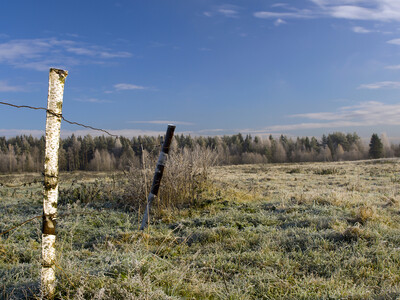Risking It All & Forcing Removal
Risking It All & Forcing Removal plus Food Forethought. I’m Greg Martin with today’s Northwest Report.
If you will remember just a few short years ago when work on the last farm bill stretched well into the next year, it was a very unstable time as many ag producers were not sure what would become of many programs. According to Former House Ag Committee Chairman Larry Combest, agriculture could end up risking it all if the new farm bill isn’t finished now, rather than later.
COMBEST: There was a game show which aired several years ago where the host would ask the participant whether they wanted to keep what they just earned or whether they wanted to risk it all. That’s a question that all producers and producer organizations want to ask themselves right now. Do I want a five year farm bill enacted into law by this Christmas or do I want to risk it all?
Speaking on behalf of the Public Lands Council and the American Sheep Industry Association, Margaret Soulen Hinson told members of the House Subcommittee on National Parks, Forests and Public Lands, - if the U.S. Forest Service’s proposed forest planning rule goes into effect, thousands of ranching families could be forced off the land. Hinson is an Idaho cattle and sheep producer and president of ASI. If the rules go through, Hinson said - by 2013, she and her family would be forced to remove 60 percent of their sheep from their allotments on the Payette National Forest, which may well mark the end of the family’s 80-year-old sheep operation altogether.
Now with today’s Food Forethought, here’s Lacy Gray.
Move over Boris Karloff, there’s a new breed of “mummy” in town. In something that sounds like it came from and old horror movie script thousands upon thousands of taped and bound insect cadavers are bringing down prey many times their own size. Don’t worry though, these little “undead” powerhouses don’t go after people, plants, or pets, they only feast on the larval stages of Japanese beetles, vine weevils, root borers, and other crop destroying insect pests. What are they? These insect cadavers are actually hosts to the very small elite group of insect killing nematodes whose “dinner preference” has made them good choices for biological pesticides. Without going into all the gory details, the nematodes use their cadaver insect hosts as incubators to breed new generations of juvenile nematodes who are born hungry. Scientists have found that the easiest way to transport these nematode infected insect cadavers from lab controlled containers to the actual pest infested fields was to sandwich them between two strands of masking tape; thus the “miniature mummies” are formed. Once again nature proves that while it may not always be “pretty”, it is pretty amazing!
Thanks Lacy. That’s today’s Northwest Report. I’m Greg Martin on the Ag Information Network.














